Evaluation of the Ecological Environment Quality of the Kuye River Source Basin Using the Remote Sensing Ecological Index
Abstract
:1. Introduction
2. Materials and Methods
2.1. Study Area
2.2. Date Source and Date Processing
2.3. Methodology
2.3.1. RSEI Calculation
2.3.2. Spatial Autocorrelation Analysis
2.3.3. RSEI Flow Chart
3. Results
3.1. PCA of RESI
3.2. Variation Characteristics of RSEI Index
3.2.1. NDVI
3.2.2. WET
3.2.3. NDBSI
3.2.4. LST
3.3. Spatiotemporal Characteristics of the RSEI Evolution in the Kuye River Basin
3.4. Spatial Auto-Autocorrelation Analysis of RSEI
3.5. Local Indicators of Spatial Autocorrelation of RSEI
4. Discussion
4.1. The Influence of Natural Factors on the Ecological Environment
4.2. The Influence of Human Activities on Ecological Environment Change
5. Conclusions
Author Contributions
Funding
Institutional Review Board Statement
Informed Consent Statement
Data Availability Statement
Conflicts of Interest
References
- Li, P.H. Research on Eco environmental quality evaluation system based on big data analysis. Comput. Intell. Neurosci. 2022, 2022, 5191223. [Google Scholar] [PubMed]
- Li, M.; Li, Y.; Zhang, Y.Z.; Xu, Q.L.; Iqbal, M.S.; Xi, Y.L.; Xiang, X.L. The significance of phosphorus in algae growth and the subsequent ecological response of consumers. J. Freshw. Ecol. 2022, 37, 57–69. [Google Scholar] [CrossRef]
- Hu, W.; Li, C.H.; Ye, C.; Chen, H.S.; Xu, J.; Dong, X.H.; Liu, X.S.; Li, D.L. Effects of aquaculture on the shallow lake aquatic ecological environment of Lake Datong, China. Environ. Sci. Eur. 2022, 34, 19. [Google Scholar] [CrossRef]
- Jiang, Z.M.; Wu, H.; Lin, A.Q.; Shariff, A.; Hu, Q.; Song, D.X.; Zhu, W.C. Optimizing the spatial pattern of land use in a prominent grain-producing area: A sustainable development perspective. Sci. Total Environ. 2022, 843, 156971. [Google Scholar] [CrossRef] [PubMed]
- Liu, Y.P.; Pan, B.Z.; Zhu, X.Z.; Zhao, X.H.; Sun, H.; He, H.R.; Jiang, W.X. Patterns of microbial communities and their relationships with water quality in a large-scale water transfer system. J. Environ. Manag. 2022, 319, 115678. [Google Scholar] [CrossRef] [PubMed]
- Zhu, Q.M. Construction of ecological environment landscape evaluation system of small towns along the Huaihe River area based on fuzzy cloud model. Sustain. Comput. Inform. Syst. 2022, 35, 100697. [Google Scholar] [CrossRef]
- Hao, Z.; Ye, D.; Hui, W.; Han, Z.L.; Wang, H.Y. An empirical analysis of tourism eco-efficiency in ecological protection priority areas based on the DPSIR-SBM model: A case study of the Yellow River Basin, China. Ecol. Inform. 2022, 70, 9315. [Google Scholar] [CrossRef]
- Zara, E.S.; Vital, P.G. Phylogroup typing and carbapenem resistance of Escherichia coli from agricultural samples in Metro Manila, Philippines. J. Environ. Sci. Health B 2022, 57, 644–656. [Google Scholar] [CrossRef]
- Zuo, T.A.; Zhang, F.T.; Zhag, J.Y.; Gao, L.; Yu, S.J. Rocky desertification poverty in Southwest China: Progress, challenges and enlightenment to rural revitalization. J. Geogr. Sci. 2022, 32, 1357–1382. [Google Scholar] [CrossRef]
- Yu, J.B.; Li, X.H.; Guan, X.B.; Shen, H.F. A remote sensing assessment index for urban ecological livability and its application. Geo-Spat. Inf. Sci. 2022, 25, 1–22. [Google Scholar] [CrossRef]
- Guo, B.B.; Fang, Y.L.; Jin, X.B.; Zhou, Y.K. Monitoring the effects of land consolidation on the ecological environmental quality based on remote sensing: A case study of Chaohu Lake Basin, China. Land Use Policy 2020, 95, 104569. [Google Scholar] [CrossRef]
- Zhou, J.J.; Zhao, Y.R.; Huang, P.; Zhao, X.; Feng, W.; Li, Q.Q.; Xue, D.X.; Dou, J.; Shi, W.; Wei, W.; et al. Impacts of ecological restoration projects on the ecosystem carbon storage of inland river basin in arid area, China. Ecol. Indic. 2020, 118, 106803. [Google Scholar] [CrossRef]
- Yang, Y.J.; Song, G. Human disturbance changes based on spatiotemporal heterogeneity of regional ecological vulnerability: A case study of Qiqihaer city, northwestern Songnen Plain, China. J. Clean. Prod. 2021, 291, 125262. [Google Scholar] [CrossRef]
- Yang, L.Y.; Shi, L.; Wei, J.; Wang, Y.T. Spatiotemporal evolution of ecological environment quality in arid areas based on the remote sensing ecological distance index: A case study of Yuyang district in Yulin city, China. Open Geosci. 2021, 13, 1701–1710. [Google Scholar] [CrossRef]
- Zhou, J.B.; Liu, W.Q. Monitoring and evaluation of eco-environment quality based on remote sensing-based ecological index (RSEI) in Taihu Lake Basin, China. Sustainability 2022, 14, 5642. [Google Scholar] [CrossRef]
- Zuo, D.; Wu, D.L.; Ma, C.A.; Li, H.X.; Huang, Y.H.; Wang, D.L.; Zhao, Y.L. Effects of white spot syndrome virus infection and role of immune polysaccharides of juvenile Cherax quadricarinatus. Aquaculture 2015, 437, 235–242. [Google Scholar] [CrossRef]
- Ren, W.; Zhang, X.S.; Peng, H.J. Evaluation of temporal and spatial changes in ecological environmental quality on Jianghan Plain from 1990 to 2021. Front. Environ. Sci. 2022, 10, 406. [Google Scholar] [CrossRef]
- Zhang, M.; Wang, J.P.; Zhou, R.J. Sustainable effect of coal mining on hydrological drought risk: A case study on Kuye river basin, China. Nat. Hazards 2020, 103, 2929–2943. [Google Scholar] [CrossRef]
- Nie, X.R.; Hu, Z.Q.; Zhu, Q.; Ruan, M.Y. Research on temporal and spatial resolution and the driving forces of ecological environment quality in coal mining areas considering topographic correction. Remote Sens. 2021, 13, 2815. [Google Scholar] [CrossRef]
- Wang, S.D.; Si, J.J.; Wang, Y. Study on evaluation of ecological environment quality and temporal-spatial evolution of Danjiang River Basin (Henan Section). Pol. J. Environ. Stud. 2021, 30, 2353–2367. [Google Scholar] [CrossRef]
- Zhu, Q.; Guo, J.X.; Guo, X.; Chen, L.; Han, Y.; Liu, S.Y. Relationship between ecological quality and ecosystem services in a red soil hilly watershed in southern China. Ecol. Indic. 2021, 121, 107119. [Google Scholar] [CrossRef]
- Jiang, F.; Zhang, Y.Q.; Li, J.Y.; Sun, Z.Y. Research on remote sensing ecological environmental assessment method optimized by regional scale. Environ. Sci. Pollut. Res. 2021, 28, 68174–68187. [Google Scholar] [CrossRef] [PubMed]
- Liu, Z.S.; Wang, L.Y.; Li, B. Quality assessment of ecological environment based on Google Earth Engine: A case study of the Zhoushan Islands. Front. Ecol. Evol. 2022, 10, 551. [Google Scholar] [CrossRef]
- Zhang, Y.B.; Song, T.L.; Fan, J.H.; Man, W.D.; Liu, M.Y.; Zhao, Y.Q.; Zheng, H.; Liu, Y.H.; Li, C.Y.; Song, J.R.; et al. Land use and climate change altered the ecological quality in the Luanhe River Basin. Int. J. Environ. Res. Public Health 2022, 19, 7719. [Google Scholar] [CrossRef] [PubMed]
- Zhao, W.J.; Yan, T.T.; Ding, X.; Peng, S.Z.; Chen, H.N.; Fu, Y.C.; Zhou, Z. Response of ecological quality to the evolution of land use structure in Taiyuan during 2003 to 2018. Alex. Eng. J. 2021, 60, 1777–1785. [Google Scholar] [CrossRef]
- Yao, K.X.; Halike, A.; Chen, L.M.; Wei, Q.Q. Spatiotemporal changes of eco-environmental quality based on remote sensing-based ecological index in the Hotan Oasis, Xinjiang. J. Arid Land 2022, 14, 262–283. [Google Scholar] [CrossRef]
- Zhang, M.X.; Bao, Y.B.; Xu, J.; Han, A.R.; Liu, X.P.; Zhang, J.Q.; Tong, Z.J. Ecological security evaluation and ecological regulation approach of East-Liao River basin based on ecological function area. Ecol. Indic. 2021, 132, 108255. [Google Scholar] [CrossRef]
- Maity, S.; Das, S.; Pattanayak, J.M.; Bera, B.; Shit, P.K. Assessment of ecological environment quality in Kolkata urban agglomeration, India. Urban Ecosyst. 2022, 25, 1137–1154. [Google Scholar] [CrossRef]
- Gao, W.L.; Zhang, S.W.; Rao, X.Y.; Lin, X.; Li, R.S. Landsat TM/OLI-based ecological and environmental quality survey of Yellow River Basin, Inner Mongolia Section. Remote Sens. 2021, 13, 4477. [Google Scholar] [CrossRef]
- Gou, R.K.; Zhao, J. Eco-environmental quality monitoring in Beijing, China, using an RSEI-based approach combined with random forest algorithms. IEEE Access 2020, 8, 196657–196666. [Google Scholar] [CrossRef]
- Sun, C.J.; Li, X.M.; Zhang, W.Q.; Li, X.G. Evolution of ecological security in the Tableland Region of the Chinese Loess Plateau using a remote-sensing-based index. Sustainability 2020, 12, 3489. [Google Scholar] [CrossRef]
- Gao, Y.J.; Zhao, J.Y.; Han, L. Exploring the spatial heterogeneity of urban heat island effect and its relationship to block morphology with the geographically weighted regression model. Sustain. Cities Soc. 2022, 76, 103431. [Google Scholar] [CrossRef]
- Yang, X.Y.; Meng, F.; Fu, P.J.; Zhang, Y.X.; Liu, Y.H. Spatiotemporal change and driving factors of the eco-environment quality in the Yangtze River Basin from 2001 to 2019. Ecol. Indic. 2021, 131, 108214. [Google Scholar] [CrossRef]
- Jing, Y.Q.; Zhang, F.; He, Y.F.; Kung, H.T.; Johnson, V.C.; Arikena, M. Assessment of spatial and temporal variation of ecological environment quality in Ebinur Lake Wetland National Nature Reserve, Xinjiang, China. Ecol. Indic. 2020, 110, 105874. [Google Scholar] [CrossRef]
- Hang, X.; Li, Y.C.; Luo, X.C.; Xu, M.; Han, X.Z. Assessing the ecological quality of Nanjing during its urbanization process by using satellite, meteorological, and socioeconomic data. J. Meteorol. Res. 2020, 34, 280–293. [Google Scholar] [CrossRef]
- Zheng, Z.H.; Wu, Z.F.; Chen, Y.B.; Yang, Z.W.; Marinello, F. Exploration of eco-environment and urbanization changes in coastal zones: A case study in China over the past 20 years. Ecol. Indic. 2020, 119, 106847. [Google Scholar]
- Hu, X.S.; Xu, H.Q. A new remote sensing index for assessing the spatial heterogeneity in urban ecological quality: A case from Fuzhou City, China. Ecol. Indic. 2018, 89, 11–21. [Google Scholar] [CrossRef]
- Mo, Z.R. Ecological environment and poverty governance based on deep learning of big data. Secur. Commun. Netw. 2022, 2022, 9951234. [Google Scholar] [CrossRef]
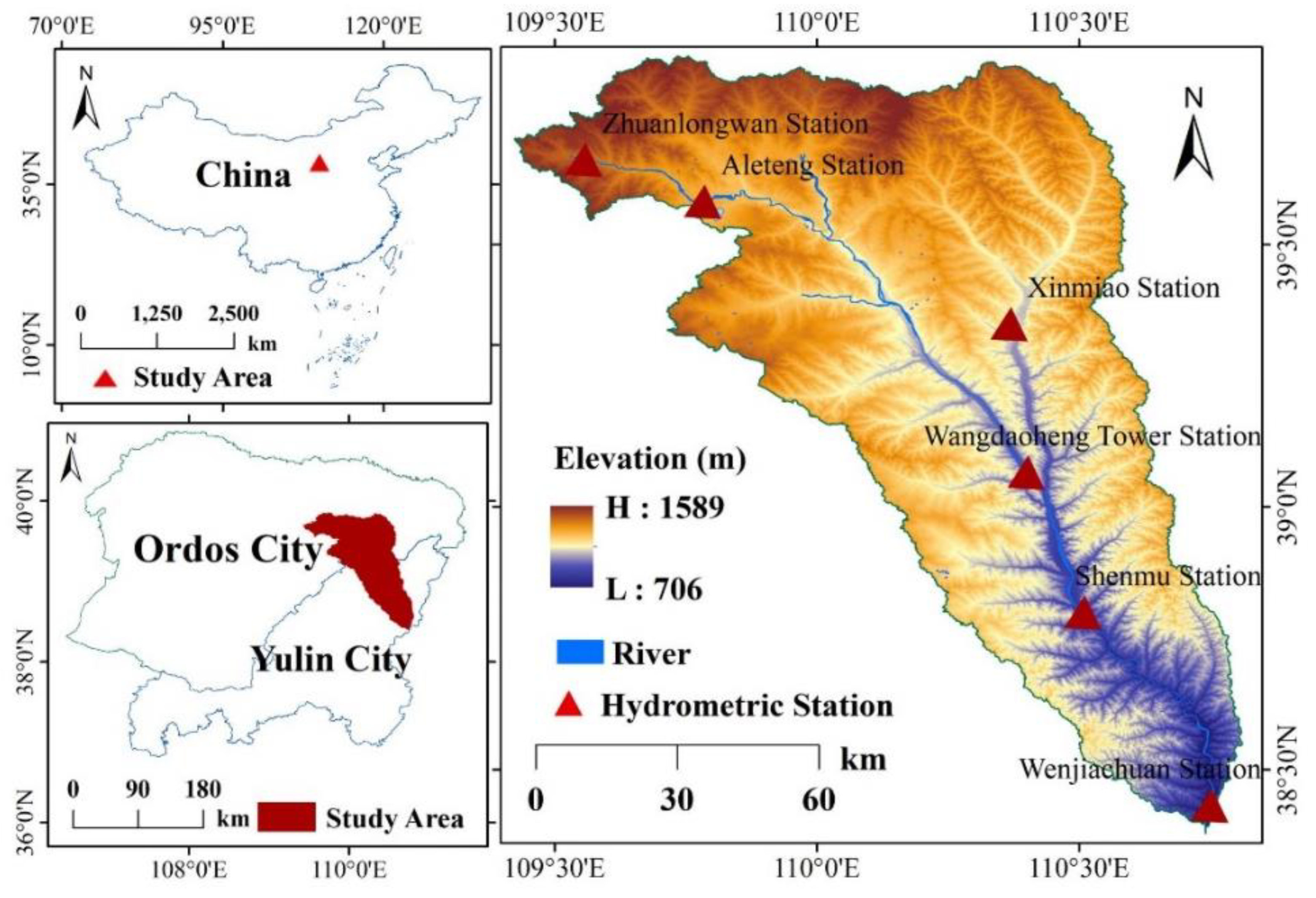

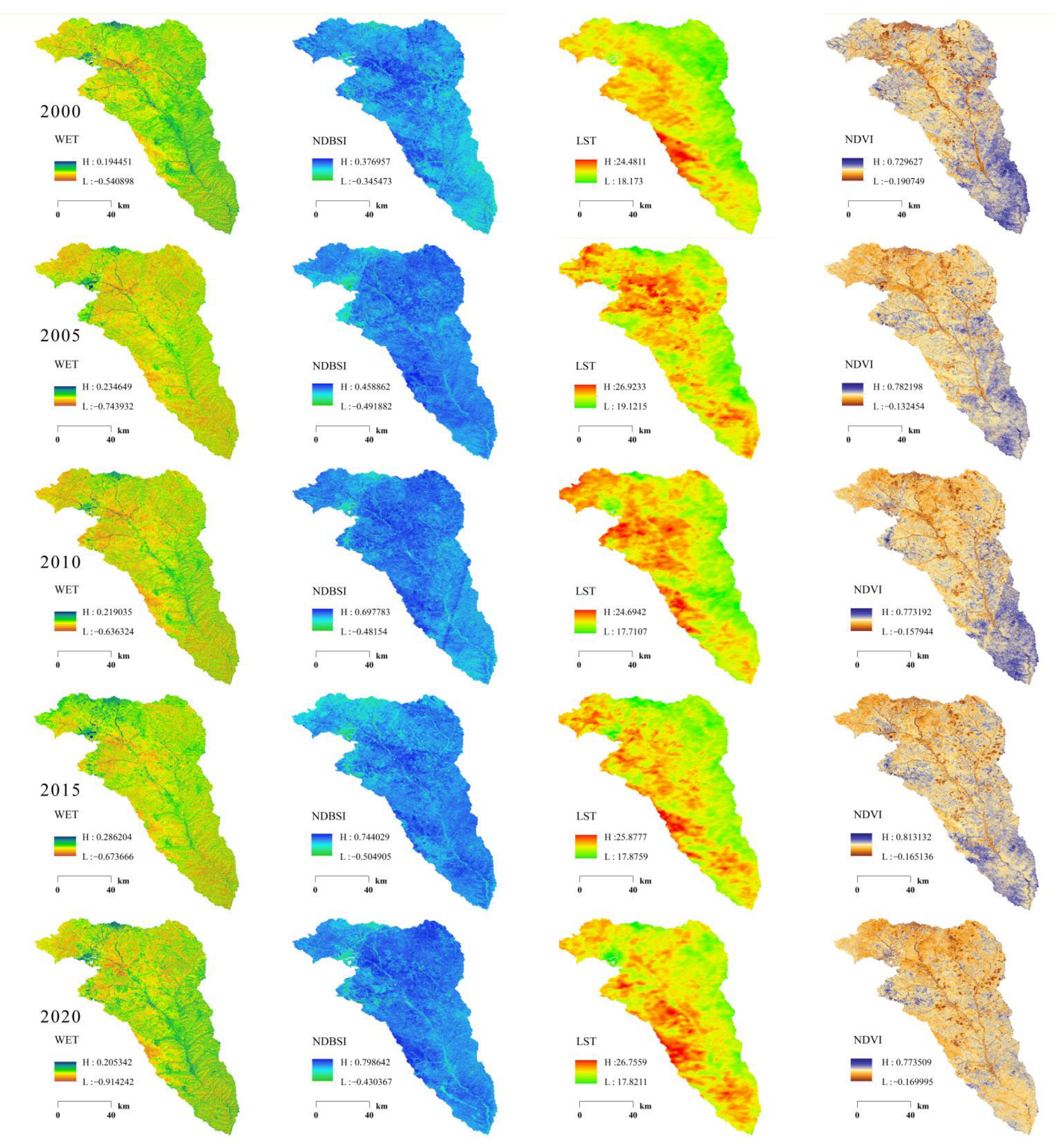
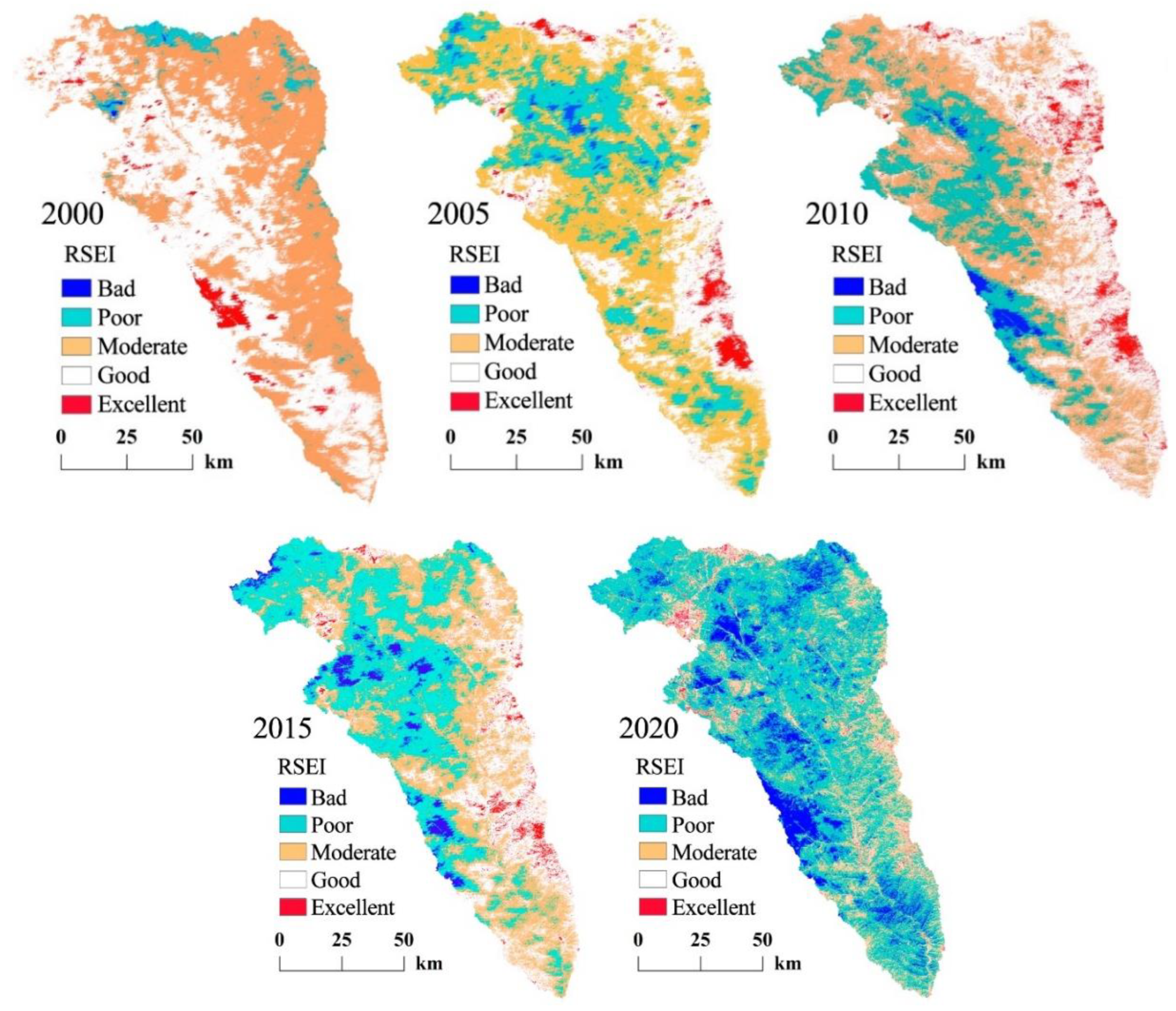
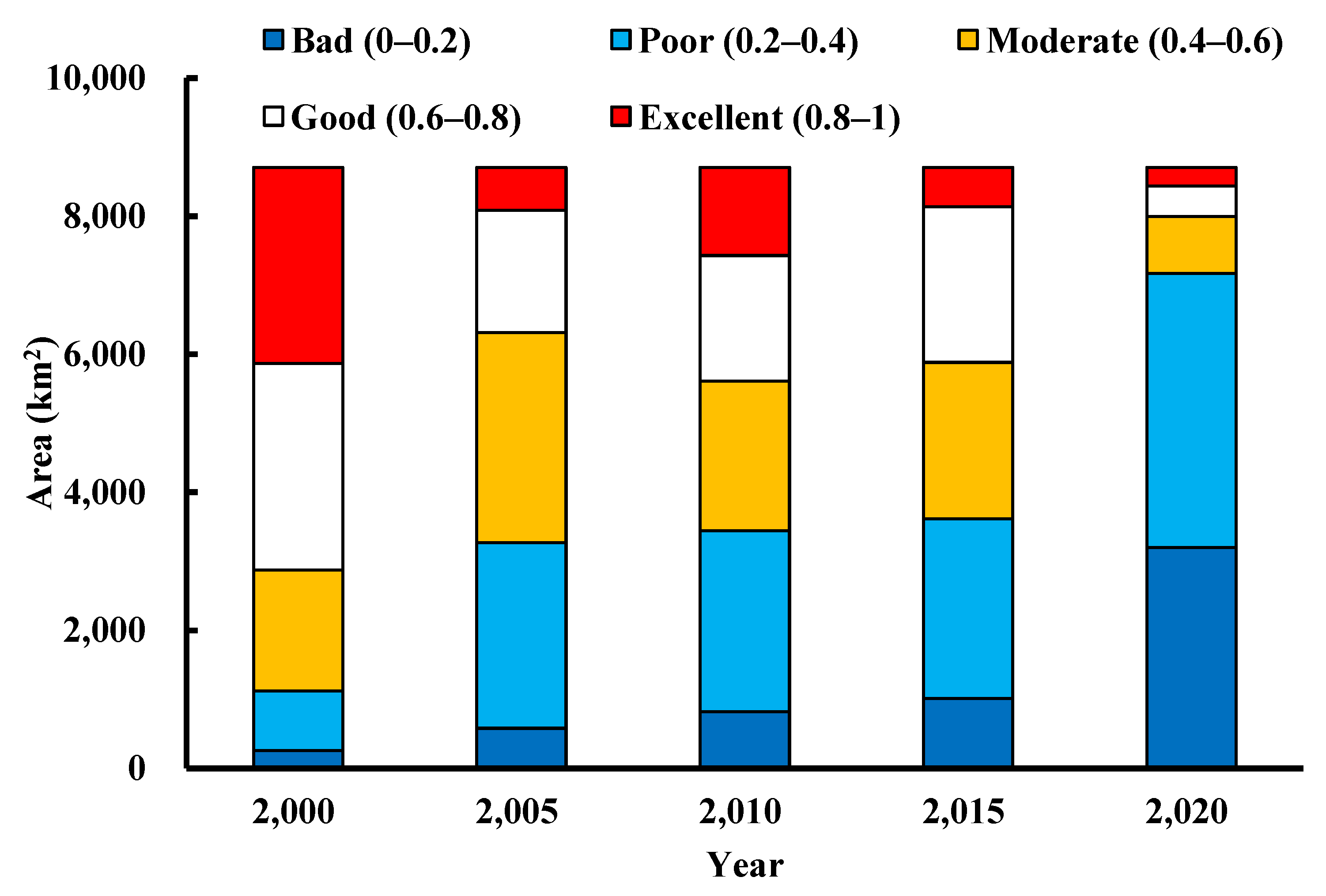
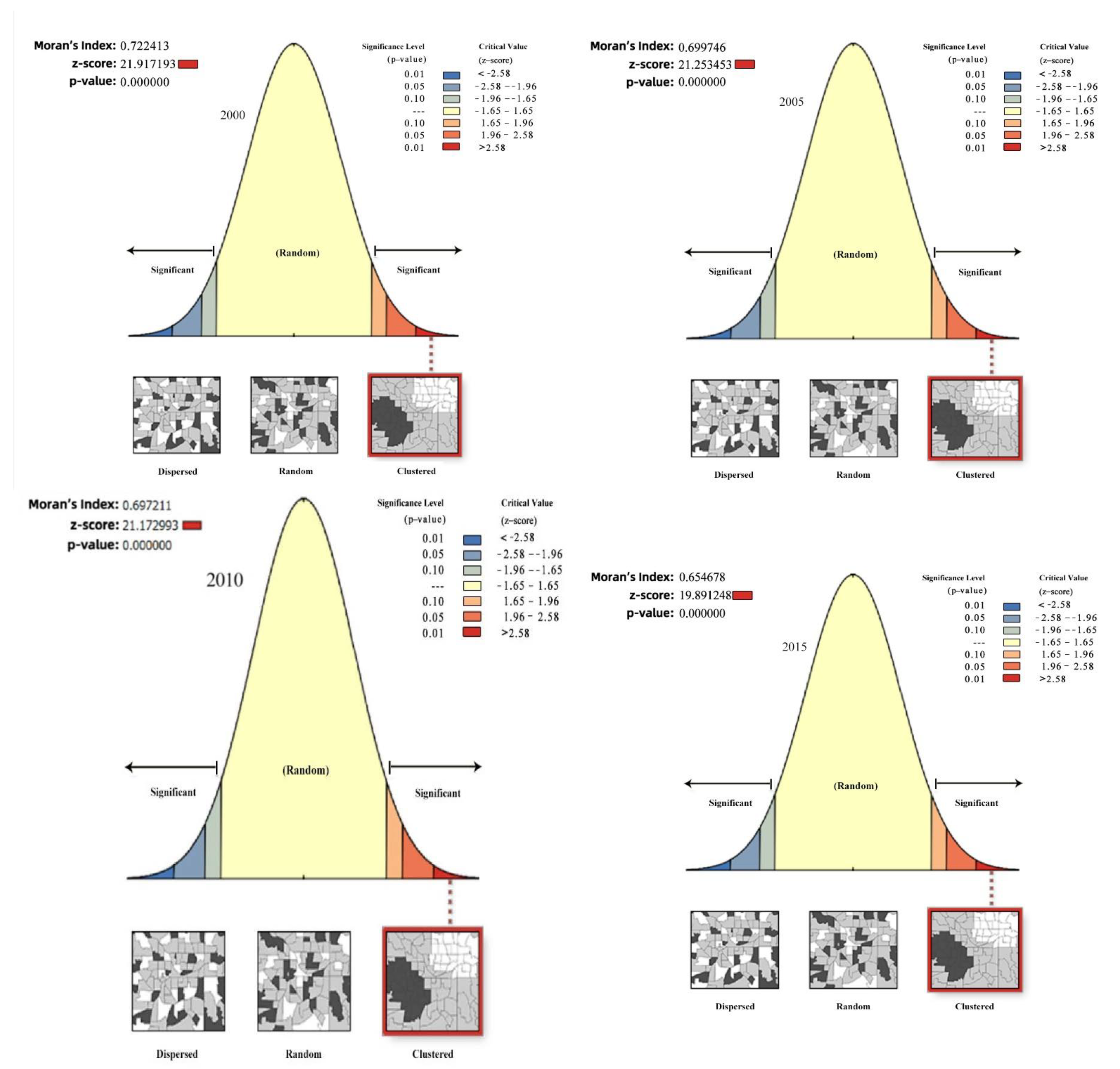
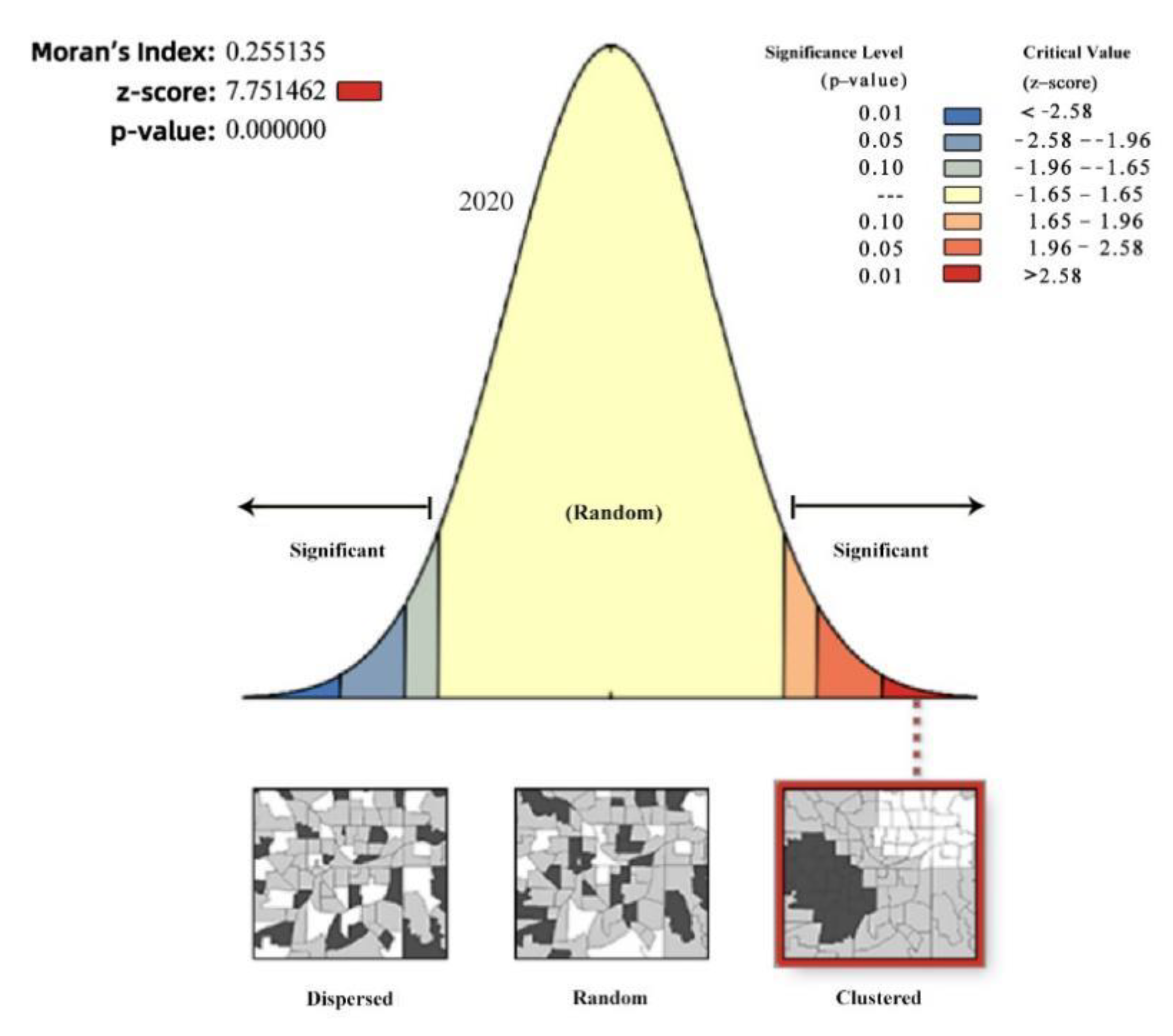
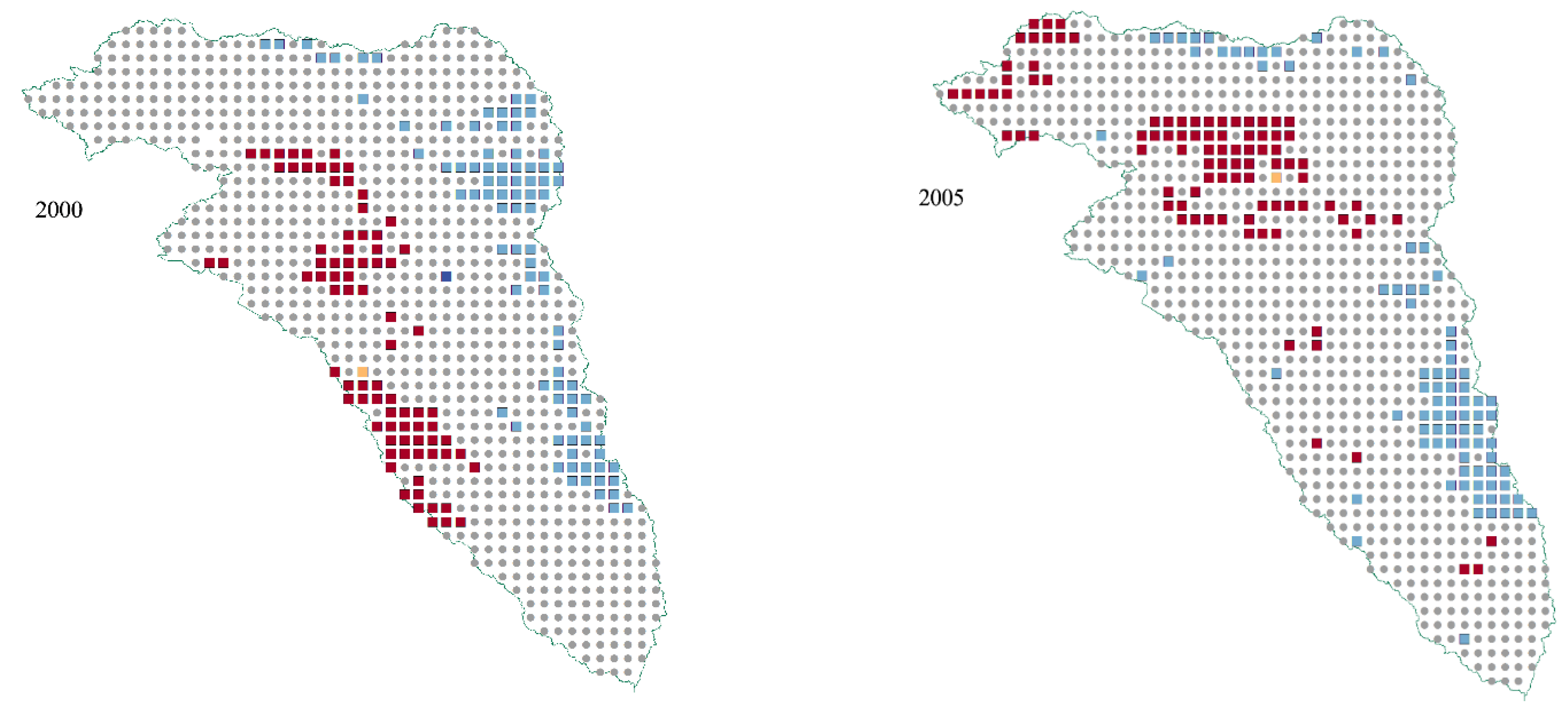
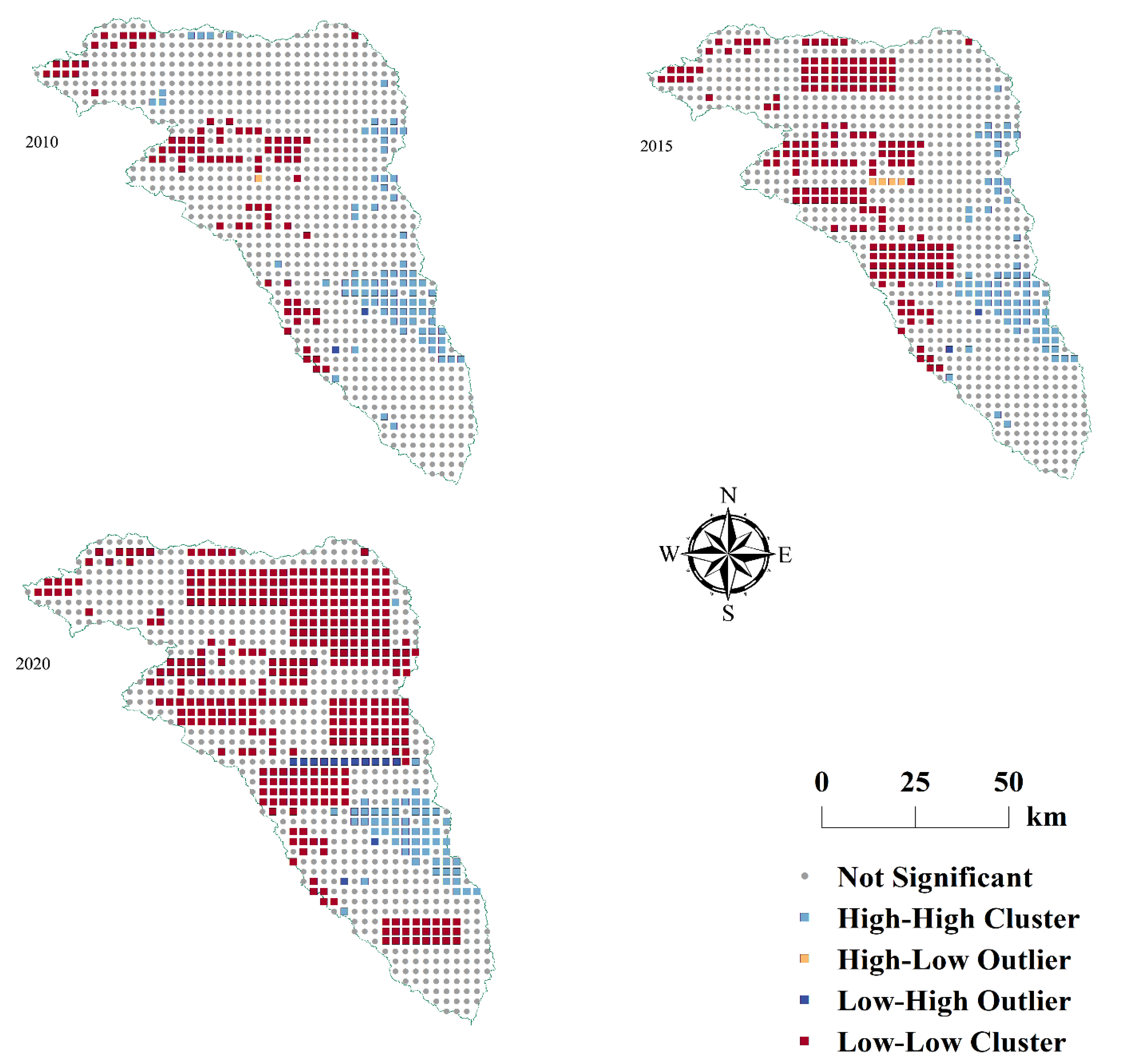
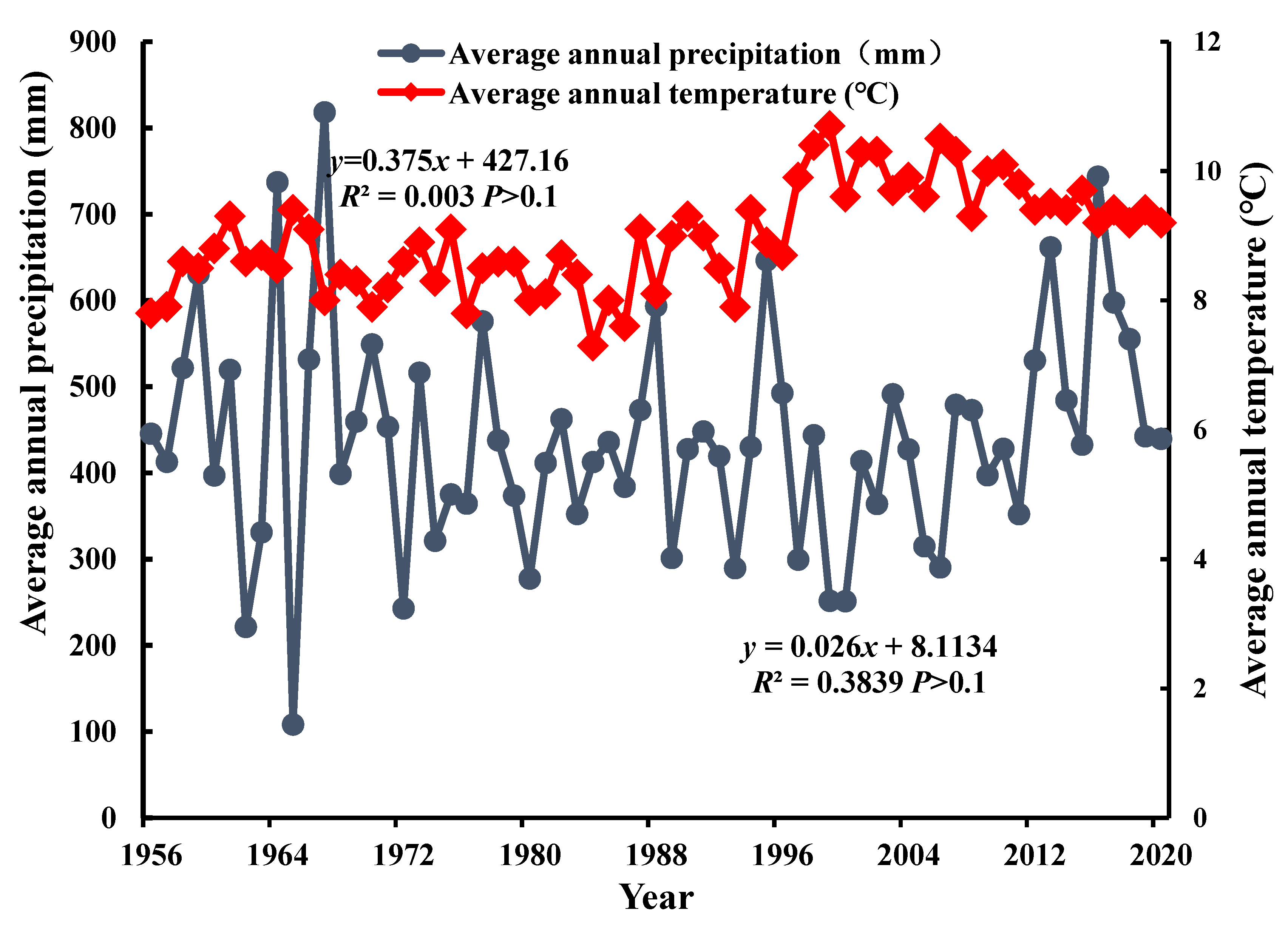

| PC1 | 2000 | 2005 | 2010 | 2015 | 2020 |
|---|---|---|---|---|---|
| NDVI | 0.081 | 0.084 | 0.081 | 0.086 | 0.091 |
| WET | 0.262 | 0.226 | 0.254 | 0.233 | 0.235 |
| NDBSI | −0.851 | −0.853 | −0.861 | −0.879 | −0.891 |
| LST | −0.351 | −0.392 | −0.357 | −0.343 | −0.365 |
| Eigenvalue | 0.267 | 0.243 | 0.273 | 0.262 | 0.351 |
| Percentage of eigenvalue | 85.61 | 86.17 | 86.83 | 85.95 | 90.01 |
| Year | Indicators | NDVI | WET | NDBSI | LST | RSEI |
|---|---|---|---|---|---|---|
| 2000 | Maximum | 0.729 | 0.194 | 0.377 | 24.481 | 1.000 |
| Minimum | −0.191 | −0.541 | −0.354 | 18.173 | 0.000 | |
| Mean | 0.428 | 0.106 | 0.282 | 19.521 | 0.595 | |
| Standard deviation | 0.122 | 0.047 | 0.129 | 3.255 | 0.134 | |
| 2005 | Maximum | 0.782 | 0.234 | 0.458 | 26.923 | 1.000 |
| Minimum | −0.132 | −0.743 | −0.492 | 19.121 | 0.000 | |
| Mean | 0.431 | 0.014 | 0.321 | 20.139 | 0.525 | |
| Standard deviation | 0.201 | 0.001 | 0.013 | 4.127 | 0.147 | |
| 2010 | Maximum | 0.773 | 0.219 | 0.698 | 24.694 | 1.000 |
| Minimum | −0.157 | −0.636 | −0.482 | 17.711 | 0.000 | |
| Mean | 0.336 | 0.021 | 0.332 | 20.333 | 0.483 | |
| Standard deviation | 0.122 | 0.001 | 0.125 | 2.999 | 0.138 | |
| 2015 | Maximum | 0.813 | 0.286 | 0.744 | 25.878 | 1.000 |
| Minimum | −0.165 | −0.672 | −0.504 | 17.874 | 0.000 | |
| Mean | 0.277 | 0.036 | 0.423 | 20.536 | 0.429 | |
| Standard deviation | 0.098 | 0.001 | 0.228 | 2.867 | 0.159 | |
| 2020 | Maximum | 0.774 | 0.205 | 0.799 | 26.756 | 1.000 |
| Minimum | −0.170 | −0.914 | −0.430 | 17.821 | 0.000 | |
| Mean | 0.017 | 0.051 | 0.528 | 20.602 | 0.387 | |
| Standard deviation | 0.001 | 0.007 | 0.186 | 2.345 | 0.112 |
| RSEI Level | 2000 | 2005 | 2010 | 2015 | 2020 | |||||
|---|---|---|---|---|---|---|---|---|---|---|
| Area/km2 | Pct./% | Area/km2 | Pct./% | Area/km2 | Pct./% | Area/km2 | Pct./% | Area/km2 | Pct./% | |
| Poor | 257.191 | 2.95 | 581.346 | 6.68 | 822.520 | 9.45 | 1010.791 | 11.61 | 3201.554 | 36.77 |
| Fair | 866.257 | 9.95 | 2690.249 | 30.90 | 2620.021 | 30.09 | 2605.081 | 29.92 | 3970.661 | 45.61 |
| Moderate | 1751.206 | 20.11 | 3041.527 | 34.94 | 2168.135 | 24.90 | 2265.580 | 26.02 | 820.006 | 9.42 |
| Good | 2989.513 | 34.34 | 1768.360 | 20.31 | 1817.897 | 20.88 | 2254.426 | 25.90 | 446.423 | 5.13 |
| Excellent | 2841.834 | 32.64 | 624.518 | 7.17 | 1277.428 | 14.67 | 570.122 | 6.55 | 267.356 | 3.07 |
Publisher’s Note: MDPI stays neutral with regard to jurisdictional claims in published maps and institutional affiliations. |
© 2022 by the authors. Licensee MDPI, Basel, Switzerland. This article is an open access article distributed under the terms and conditions of the Creative Commons Attribution (CC BY) license (https://creativecommons.org/licenses/by/4.0/).
Share and Cite
Liu, Q.; Yu, F.; Mu, X. Evaluation of the Ecological Environment Quality of the Kuye River Source Basin Using the Remote Sensing Ecological Index. Int. J. Environ. Res. Public Health 2022, 19, 12500. https://doi.org/10.3390/ijerph191912500
Liu Q, Yu F, Mu X. Evaluation of the Ecological Environment Quality of the Kuye River Source Basin Using the Remote Sensing Ecological Index. International Journal of Environmental Research and Public Health. 2022; 19(19):12500. https://doi.org/10.3390/ijerph191912500
Chicago/Turabian StyleLiu, Qiang, Feihong Yu, and Xingmin Mu. 2022. "Evaluation of the Ecological Environment Quality of the Kuye River Source Basin Using the Remote Sensing Ecological Index" International Journal of Environmental Research and Public Health 19, no. 19: 12500. https://doi.org/10.3390/ijerph191912500
APA StyleLiu, Q., Yu, F., & Mu, X. (2022). Evaluation of the Ecological Environment Quality of the Kuye River Source Basin Using the Remote Sensing Ecological Index. International Journal of Environmental Research and Public Health, 19(19), 12500. https://doi.org/10.3390/ijerph191912500






